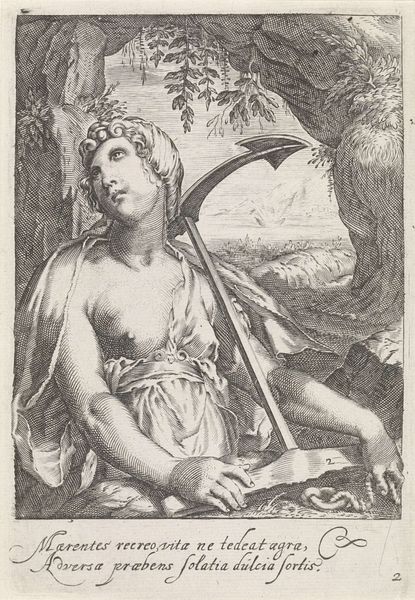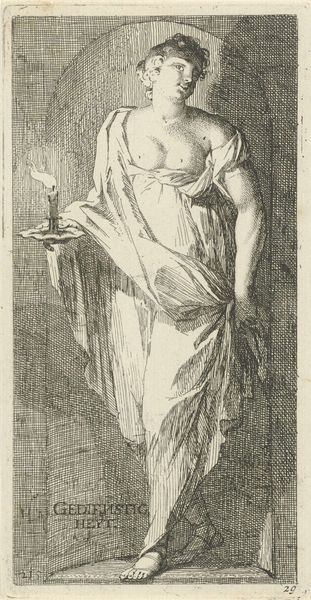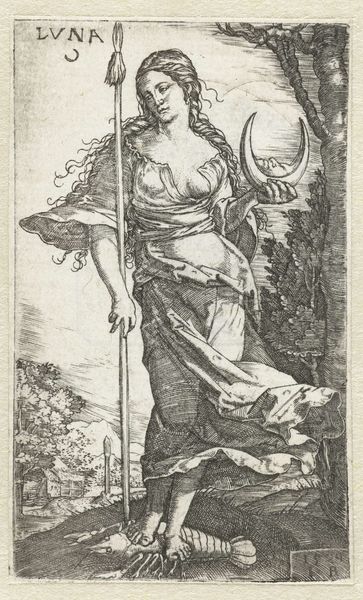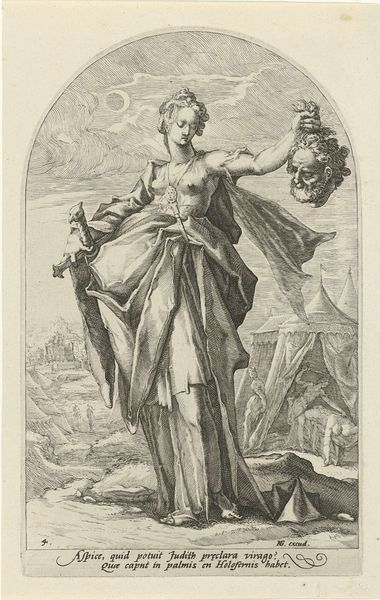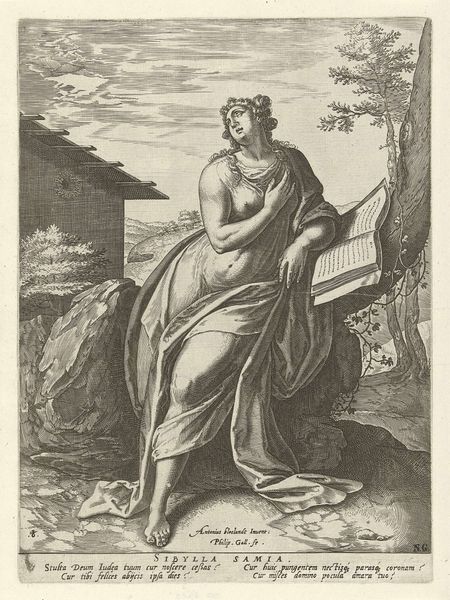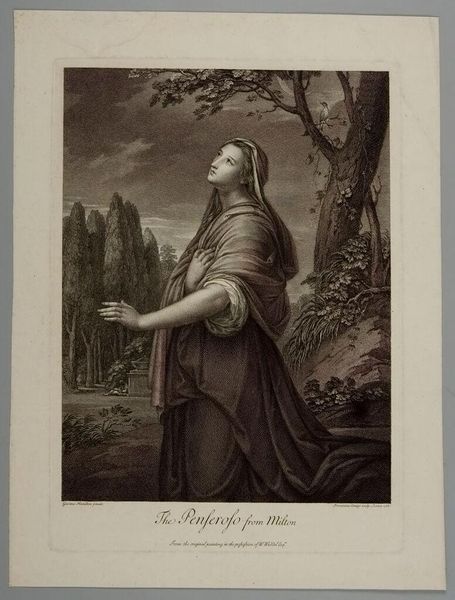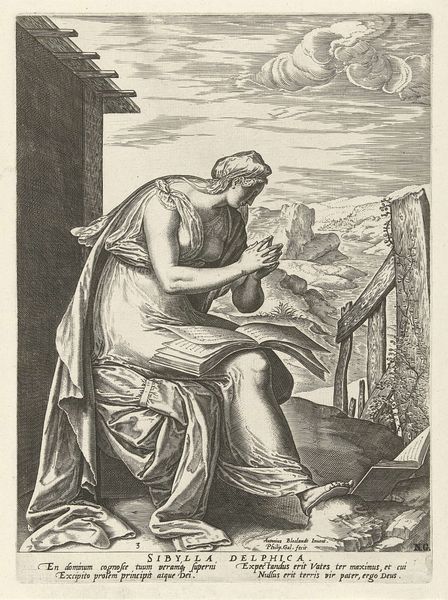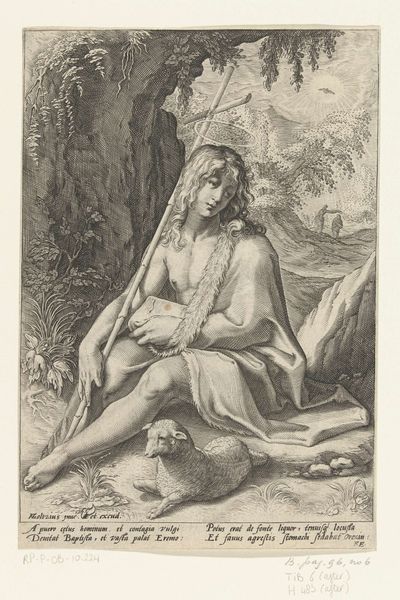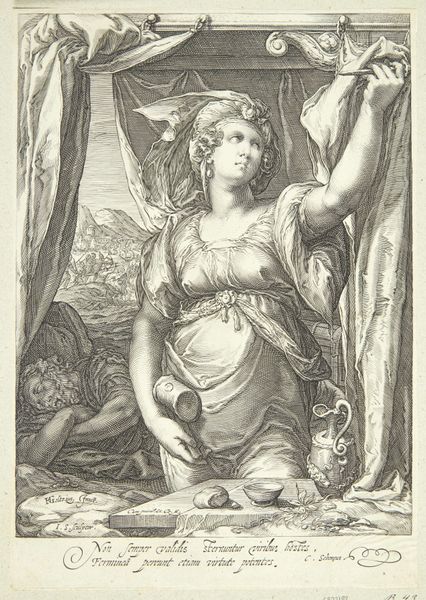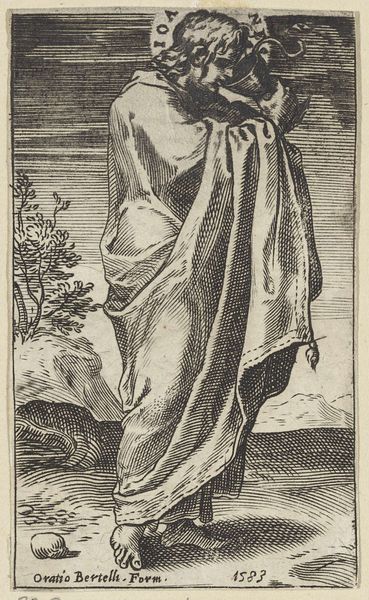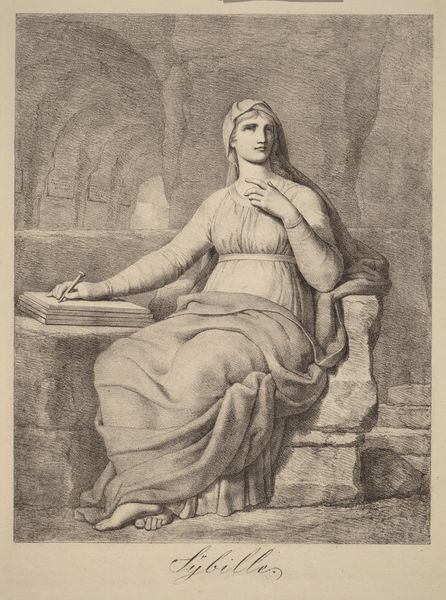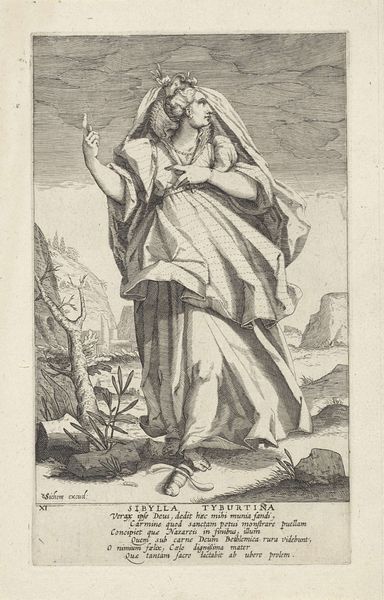
watercolor
#
portrait
#
allegory
#
figuration
#
oil painting
#
watercolor
#
romanticism
#
mythology
#
academic-art
#
watercolor
Copyright: Public Domain: Artvee
Curator: Before us, we have Friedrich von Amerling's 1835 work, "Hebe," an intriguing exploration rendered in watercolor. Editor: There's a curious blend of boldness and delicacy. I am immediately drawn to the contrast between the vibrancy of the figure and the dreamlike softness of the background. The eagle especially is commanding, isn’t it? Curator: Yes, its prominence cannot be ignored. Amerling deftly merges Romanticism and academic styles here to embody the essence of Hebe, the Greek goddess of youth. Her figure carries forward the traditional association between femininity and vitality. Editor: Right, and Amerling's choice of a young woman looking upward, almost pleading, creates a compelling dynamic. In the mythic sense, she's perpetually youthful, tasked with serving nectar of immortality—so it strikes me how she is forever stuck in a servile position despite her godhood, reinforcing ancient patriarchal structures. Curator: The symbol of the cup emphasizes her divine role. Its round shape echoes female symbolism dating back millennia. By including the eagle—a familiar attribute of Zeus—Amerling reinforces Hebe’s place in the Olympian hierarchy. Consider the colors as well: the cool blues behind contrast so poignantly with her bright ochre dress and the deep crimson cloak, reflecting Romantic sensibilities. Editor: I see a tension there. Although formally arresting and beautifully rendered, works like these can flatten mythology to the point of being symbolic ornamentation. Who did these idealized depictions actually serve? By reinforcing the notion that this figure must obey an external mandate—in this case to serve as nectar bearer of Olympus, reinforcing power structures. It also conveniently hides the brutal politics often interwoven into even seemingly benign art historical moments. Curator: And in today's contexts, viewing Amerling’s piece as a record of cultural memory lets us reconsider historical biases inherent to inherited cultural symbolism. Even so, seeing how Amerling interpreted and translated these enduring characters and symbolic language onto a new surface can offer fresh entry points into art and history. Editor: Agreed. It prompts crucial questioning, pushing us to deconstruct, reimagine, and confront who benefits from visual representation. What a fascinating dance this artwork embodies.
Comments
No comments
Be the first to comment and join the conversation on the ultimate creative platform.
